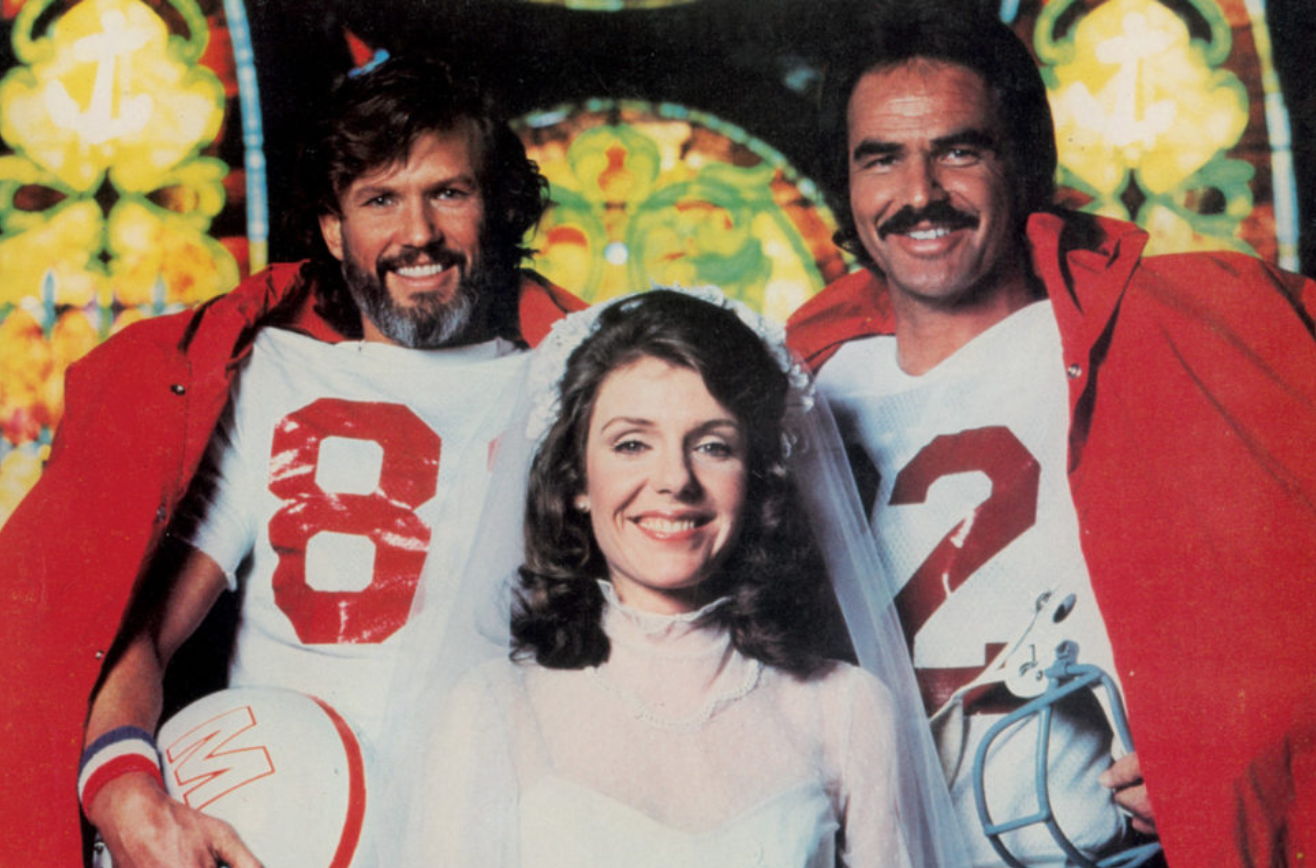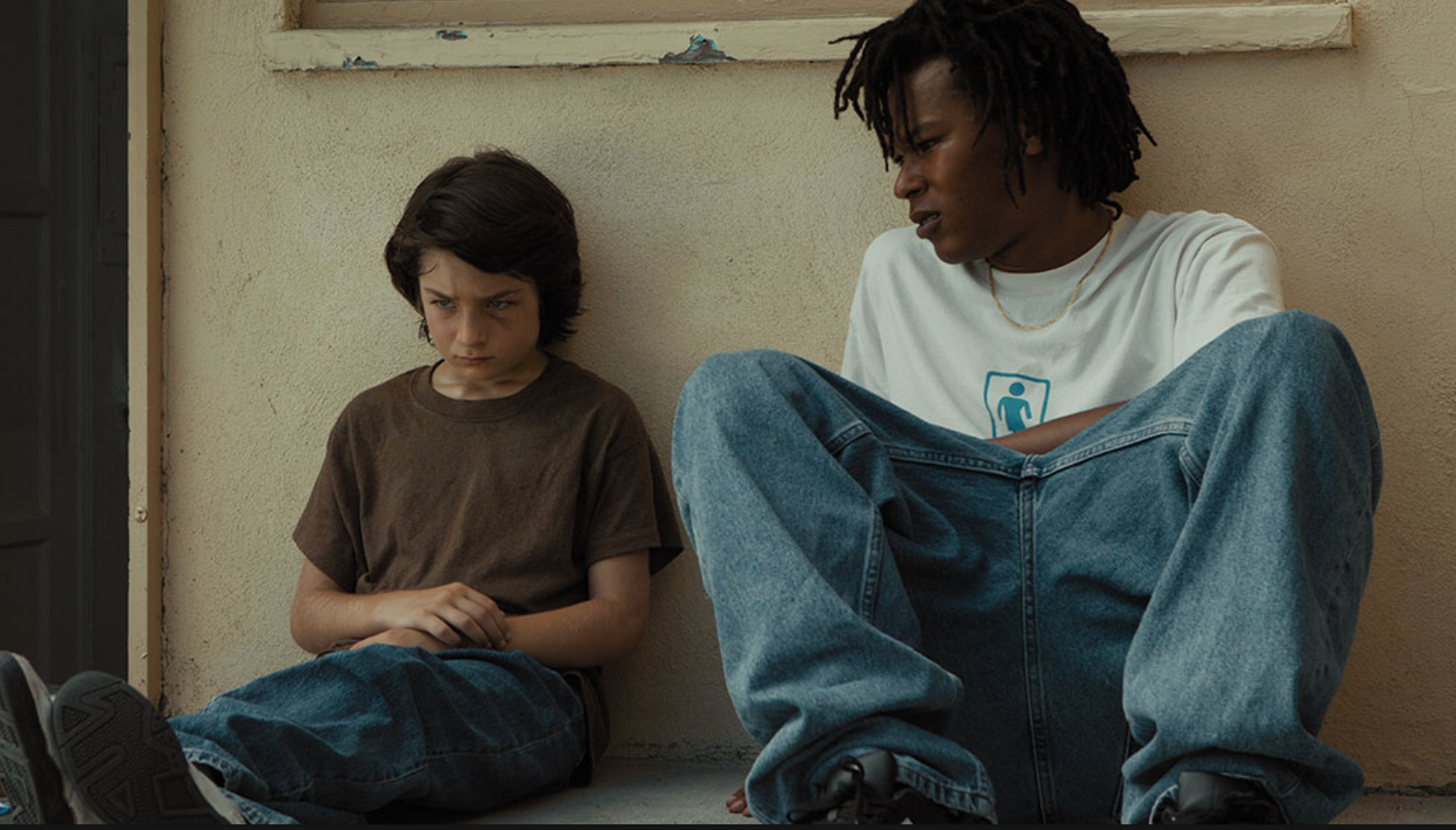Almost exactly 40 years ago, when Burt Reynolds could do no wrong. His last half-decent film, The Longest Yard, was four years old at the time. His best-ever film, Deliverance, had opened six years earlier. He would star in three more pretty good movies — Starting Over (’79), Sharky’s Machine (’81) and Best Friends (’82) — before his superstar career would begin to unravel and dissipate. If Reynolds had chosen to play Garrett Breedlove in Terms of Endearment instead of Stroker Ace, things would’ve lasted a bit longer.
Day: September 10, 2018
2 Terrorist Slaughter Films — One Works, Another Is Okay
If you’re making a film about a terrorist attack upon innocent civilians, you’ll want to emulate the excellence of Paul Greengrass‘s United 93. As it turns out Greengrass has matched his own criteria with 22 July (Netflix, 10.10), which deals with the 2011 Norway attacks and their legalistic aftermath. Certainly during the first 35 or 40 minutes, which focuses on the attacks themselves (an Oslo government bombing followed by a mass machine-gun slaughter of teenagers on the island of Utoya) by right-wing anti-immigrant terrorist Anders Breivik.
Greengrass is a total pro who wrote the manual on how to shoot this kind of film. 22 July is proof of that.
A day before seeing the Greengrass I caught the “other” terrorist-attack-upon-innocent-civilians film, Anthony Maras‘ Hotel Mumbai (Bleecker Street, date unknown). It’s a decent enough re-capturing of the 2008 Mumbai attacks, which were carried out by Islamic Pakistani terrorists. It feels fairly realistic and well-ordered as far as it goes, but tonally it feels a little bit like a ’70s disaster film, like Irwin Allen and Ronald Neame‘s The Poseidon Adventure or Jack Smight‘s Airport 1975.
You know the type of film I’m describing — an unsettling if somewhat superficial exercise about wealthy people and devoted staffers trying to escape death but with no underlying attitude or undercurrent on the part of the director. The ’70s disaster film that Hotel Mumbai should have tried to measure up to is Richard Lester‘s Juggernaut, but that wasn’t in the cards.
There are two interesting (and possibly problematic) things about Greengrass’s film. One is that it portrays Breivik as relatively rational with a sense of discipline and self-control. Cold, paranoid and sociopathic, okay, but not a raving nutter. During the investigation and trial Beivik explained that he carried out the attacks to call attention to his opposition to Islamic immigration and his view that feminism has created a European “cultural suicide”. I’ve heard that there are some journos and industry types who feel that Greengrass did Breivik too much of a favor by allowing his character to explain his extreme right-wing views in a measured and somewhat neutral fashion.
The other problem is that most of 22 July is about the slow recovery of one of Breivik’s victims, a young good-looking guy who was shot on Utoya two or three times and lost an eye but lived and gradually learned to walk and speak again. Greengrass’s focus on his emotional states during his long, slow path to semi-recovery (not mention his ultimate face-to-face confrontation with Breivik) is not uninteresting or uninvolving, but there’s a feeling that Greengrass should have dwelled upon some other aspect of the Norway attacks. There’s something about what this young guy went through that doesn’t quite do it for those of us in the seats. This is going to sound a bit callous, but most of us want edgy thrills from Greengrass, not emotional difficulty or working through physical trauma.
OMG and Bill Murray Don’t Get Along
When informed of either the nearby presence or imminent arrival of a well-known performer-celebrity, the one thing I will never, ever say is “oh my God.” You’re allowed to say “oh my God” if you’re watching something breathtaking or horrific, but you’re not allowed to say it if someone tells you that Bill Murray has just arrived at a party you happen to be attending. Murray is one of the greatest guys in the world when it comes to mocking or otherwise shutting down inane questions from lightweight journalists, so I’m presuming he would be the last guy in the world to nod approvingly at some doofus saying “oh my God…it’s Bill Murray.”
Straight-Up Skateboard
Let’s get something out of the way: Jonah Hill‘s Mid90s (A24, 10.19) doesn’t re-invent or re-invigorate the subgenre known as the L.A. skateboard culture movie (Lords of Dogtown, Wassup Rockers, Dogtown and Z-Boys, Sweet Dreams, Thrashin’). But Hill is more or less recounting his own teenaged saga here, and he’s honored that straight-from-the-pavement aesthetic by dealing no-bullshit cards, at least by the standards that I understand. Plus he knows how to write a story with a beginning, middle and ending. Plus how to shoot and cut and get decent performances out of non-actors and sustain a certain tone or mood or whatever. And so Mid90s holds its own, and that ain’t hay.
I’m in no way dismissing Mid90s by calling it a fully realized, nicely shaded, highly engaging first film. There are maybe a thousand things you can get wrong when you make a movie, and by my sights Hill hasn’t messed up in any discernible way. By the same token he hasn’t levitated his film off the pavement and into the realm of wild-blue-yonder greatness, but whaddaya want from the guy? Does anyone know how hard it is to make even a mediocre film? Hill has made a perfectly good one, and it must have been a bitch to get there. Here’s to the concept of making films about what you’ve been through personally and sticking to what you know. Hill has stepped up to the plate and swung on a fastball and connected…crack!
“When Jonah Was 13 Or So,” posted on 7.24.18: You can tell right off the bat that Jonah Hill‘s Mid ’90s is an exception of one kind or another. It sure doesn’t feel like just another Los Angeles skateboard flick. You can sense a focus on character and kid culture and ’90s minutiae. Fast and loose and raggedy — the rhythms and the atmosphere feel right.
Pic is set in the lower West L.A. region — Palms, Culver City, Venice — and partly focused on a Motor Ave. skateboard shop. (Born in ’83, Hill grew up in the Cheviot Hills neighborhood or just north of these regions.) Sunny Suljic (The Killing of a Sacred Deer) has a certain X-factor thing going, and I love that Hill has Lucas Hedges playing a domineering-shit older brother instead of the usual gentle-sensitive guy from Lady Bird, Boy Erased and Manchester By The Sea. Katherine Waterston plays Suljic’s mildly unstable mom.
Directed and written by Hill; shot by Christopher Blauvelt (Indignation) in HE’s own 1.37 aspect ratio (boxy is beautiful) and edited by Nick Houy.
One From The Heart
“Raymond Shaw is the kindest, warmest, bravest, most wonderful human being I’ve ever known in my life.” — Maj. Bennett Marco (Frank Sinatra) in The Manchurian Candidate, 1962.
“[Bradley Cooper and Lady Gaga] were two of the kindest, most gracious and most honest people I’ve ever had the chance to interview.” — Jake Hamilton following A Star Is Born junket interview, September 2018.
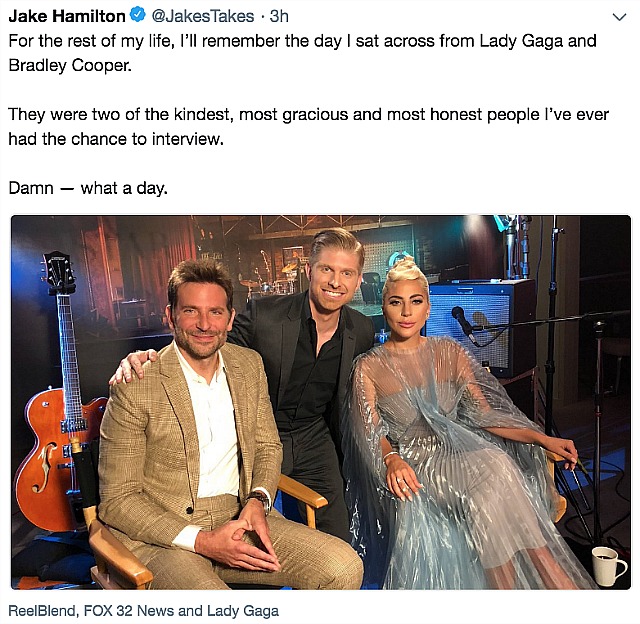
“Capernaum” in Toronto
Nadine Labaki‘s Capernaum (Sony Pictures Classics, 12.14) is about a 12 year-old Lebanese kid (and a small-framed one at that, making him look eight or nine) going through hard-knocks destitution on the streets of Beirut.
Does it get you emotionally to watch a raw verite depiction of a parent-less, penniless kid struggle to survive while trying to take care of an infant boy in diapers? Of course it does, but I didn’t see Capernaum as manipulative because I didn’t sense any lying or exaggerating on the part of Labaki, the kid (Zain Al-Rafeea), the infant or any of the supporting characters. What other way could a director possibly depict extreme poverty except in a plain, matter-of-fact way?
I flipped over Capernuam four months ago when I first saw it in Cannes. “It isn’t really about a child who files a lawsuit against his parents for giving him birth, as the point is never vigorously or extensively argued in a courtroom setting,” I said. “It is, however, a deeply affecting hard-knocks, street-urchin survival tale in the vein of Pixote or Slumdog Millionaire.”
I thought Capernaum would win the Palme d’Or for sure; it wound up with the Jury Prize. Last weekend in Toronto I caught a version that was 13 minutes shorter, but I couldn’t sense any significant differences.
I chit-chatted with Nabaki at the Sony Classics dinner at Morton’s. We spoke about the trims she and her editor, Konstantin Bock, have made. And about how Zain Al-Rafeea, who’s now 14, has grown taller and experienced a slight deepening of his voice. And about Tony Gilroy‘s Beirut, which she’d heard wasn’t so good from a nativist viewpoint but which I feel is actually quite good as a complex political thriller, and also due to the not-accidental fact that all the main characters are interlopers.
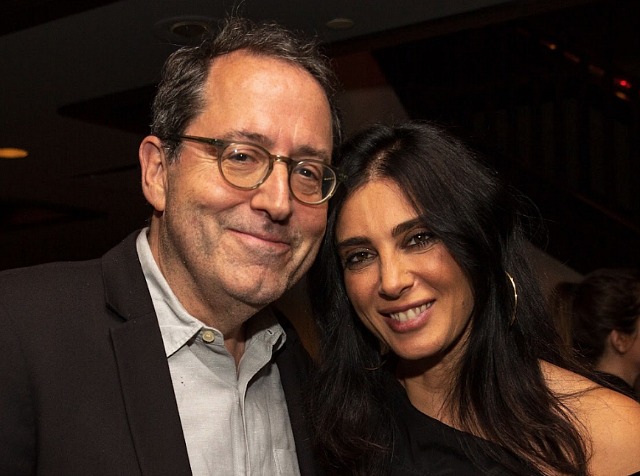
Sony Pictures Classics co-president Michael Barker, Capernaum director-writer Nadine Labaki at last weekend SPC dinner at Morton’s.
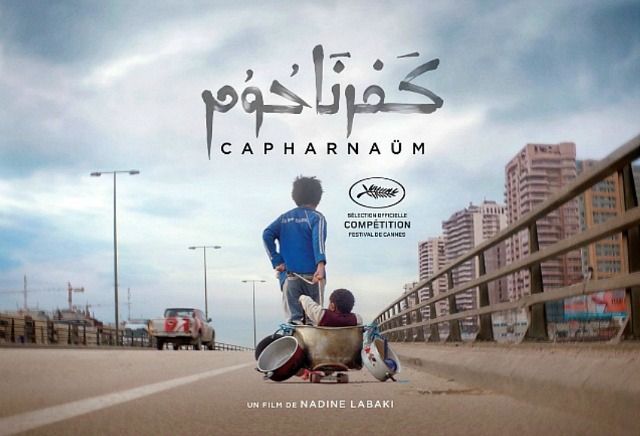

Empty Slots
I’ve been trying like hell to find something to see aside from Jonah Hill‘s Mid90s, which has a press and industry screening at 12:30 pm. I tried to wangle a ticket to a 2 pm Roy Thomson hall screening of Brady Corbet‘s Vox Lux, but the press rep told me she has none. Which I kinda doubt. The film is looking for a distributor and they know I have a Brady Corbet issue, etc.
The rest of the day is wide open, and there just doesn’t seem to be anything happening that sounds even half-intriguing. The only evening activity is an 8:30 pm Roma party. It’s a shame — six hours of TIFF time and nothing on my plate. On top of which it’s raining. I guess I’ll just head home, tap out my Mid90s review and do some laundry. And then hit the Alfonso soiree tonight.
From Owen Gleiberman’s Mid90s review: “Mid90s is about as spiky and unsentimental as a youth-rebellion movie can get. Hill makes it feel like a documentary, and by that I don’t just mean that it’s shot in a mode of unvarnished simulated verite. The actors who play the skate punks all have a found-object quality. They may or may not be ‘playing themselves,’ but their personalities don’t feel concocted for the camera. And that’s why Mid90s, though made by a Hollywood star, isn’t a nostalgic indie ‘fable’ in gritty skate-punk drag. It’s something smaller and purer: a slice of street life made up of skittery moments that achieve a bone-deep reality. And because you believe what you’re seeing, what the moments add up to, in their artfully random way, is an adventure.”
Rat-A-Tat-Tat
A couple of days ago I did a phoner with WGN’s Chris Jones and Mark Caro from Toronto — the death of Burt Reynolds (“Too many redneck movies”), Kris Tapley and A Star Is Born, First Man, Melissa McCarthy in Can You Ever Forgive Me?. They kept trying to nudge me along — punch, punch, cut to the chase, cut to the chase, etc. Jones especially — he’s a pusher, a poker. Again, the link.


